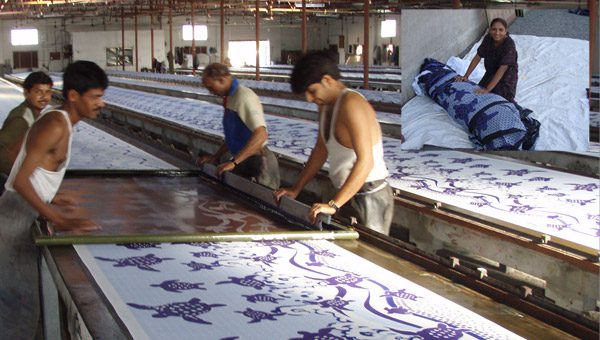Sarong Printing in India
The sarongs you buy from my web site have a rich heritage and it is interesting to take a glimpse at the past to understand where you product comes from and how it is produced.
Yarn, fabrics, and tools for spinning and weaving have been found among the earliest relics of human habitations. Linen fabrics dating from 5000 B.C. have been discovered in Egypt. Woolen textiles from the early Bronze Age in Scandinavia and Switzerland have also been found. Cotton has been spun and woven in India since 3000 B.C., and silk has been woven in China since at least 1000 B.C.
It is known that Indian textiles were traded in ancient times with China and Indonesia, as well as with the Roman world. Originally these ornate fabrics were only available to the wealthy Mogul emperors, but as printing methods improved they were made into Saris and Luhngis for domestic use.
The first prints were made by applying the dyes to the substrate with wooden blocks to create a pattern. Each colour required a separate block and the process was all done by hand on small wooden tables. Cotton Voile has been printed in India since 3000 BC and the methods of producing and printing cotton has advanced substantially during this time. The highest quality voiles number 82 x 120 weft and wove, but are still produced on machinery from the dark ages because modern machines are too fast and tend to burn the yarn.
Screen printed fabrics from India date back to 360 BC and are still printed by hand using tried and proven techniques in villages along the Indus river in Gujarat and the Hindu Kutsh due to the need of an abundant water supply and a hot climate to dry the colours in between prints. Nude Beach pareos are printed in one of the oldest villages renowned for this process. I travel there with my designs and spend up to three months producing my unique prints.


